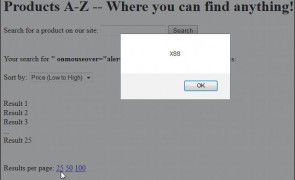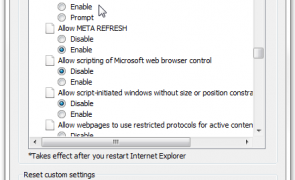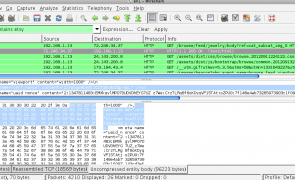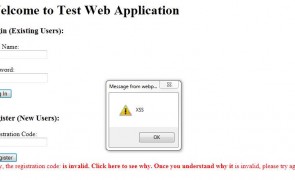Who do you trust? Cross-domain content extraction with Clickjacking

Overview Today I’ll illustrate how it’s possible to extract sensitive data via Clickjacking by taking advantage of some liberal framing behaviors in Firefox coupled with a X-Frame-Options:Allow header that forms an implicit trust relationship between two sites. This Clickjacking POC takes advantage of several site and browser behaviors including: Etsy.com set an X-Frames-Options: Allow header when accessed directly from a search engine query result Microsoft Bing search engine allows framing…
Read more...Tags:Bing , Clickjacking , content extraction , cross domain , Etsy , Firefox , trust , X-Frame-Options
When is Clickjacking NOT a concern?
are closed
According to Microsoft, when it involves more than 1 click. That’s the feedback I received when I recently submitted a Clickjacking bug to Microsoft’s Security team. This particular Clickjacking bug, on an authenticated portion of the site, could induce a victim to unknowingly change their account privacy settings. The problem, according to Microsoft, is that it requires a minimum of two clicks; one to change the privacy setting and one…
Read more...Tags:bug bounty , Clickjacking , Microsoft , web security , X-Frame-Options , XFO
11 Fallacies of Web Application Security
are closed

Introduction By far, application security testing is one of the best parts of my job. Working one-on-one with application developers, I find that nearly all want to do the right thing when it comes to security but many face common misconceptions about security vulnerabilities (and the necessary remediation actions). This is my attempt to address some of those misconceptions surrounding authentication, session management, access control, SQL Injection, XSS, and CSRF…
Read more...Tags:authentication , csrf , injection , session management , web application security , XSS
Quotes and XSS — Planning Your Escape
are closed

Introduction It’s been my observation that when it comes to XSS prevention, angle brackets associated with HTML and script tags (<>) often get the majority of the attention. While eliminating script tags as a potential XSS vector is a great start, just as important, and seemingly most forgotten when it comes to input validation and output encoding, are double (“) and single (‘) quotes. Whether they are completely ignored or…
Read more...Tags:Cross Site Scripting , encoding , escaping , filter evasion , input validation , penetration testing , quotes , reflected xss , security , web application , web security , XSS
Cross Origin Request Forgery Pt 2 – Exploiting Browser Security
are closed

Introduction In my previous post I demonstrated how insecure handling of CSRF tokens by applications that switch between HTTP and HTTPS can put users at risk of request forgery attacks via man-in-the-middle interception. Today I ‘ll expand upon this point and demonstrate how it can provide remote attackers the same opportunity, if the user’s browser is not configured to prevent insecure cross-domain communications. Recall in the last post, the site…
Read more...Tags:browser security , cross domain , cross origin , cross site request forgery , csrf
Cross Origin Request Forgery – Attacking HTTPS via HTTP MiTM Injection
are closed

Introduction There are several scenarios in which a web application may choose to deliver both HTTP and HTTPS content. It may employ per-page mixed content, it may use HTTP pre-auth and switch to HTTPS post-auth, or it may continually switch back and forth between HTTP and HTTPS depending on the sensitivity or criticality of the functions being performed by the user (i.e. browsing media content vs. making online purchases). For…
Read more...Tags:csrf , http injection , mitm , request forgery , session management , web security
XSS with a little help from ASP.NET and IE9
are closed

Here I’ll demonstrate how it’s possible to evade ASP .NET Request Validation and take advantage of Internet Explorer 9 quirks to execute a working XSS exploit. Let’s look at a scenario… You suspect an ASP.NET application you’re testing is vulnerable to reflected XSS because it displays user input to the screen. Its login page includes a registration function and if a user inputs the wrong registration number (passed via a…
Read more...Tags:ASP , ASP.NET , Cross Site Scripting , IE9 , Internet Explorer , web security , XSS
 Security Sift
Security Sift
are closed